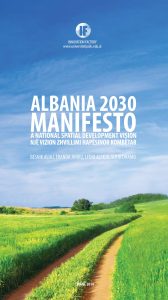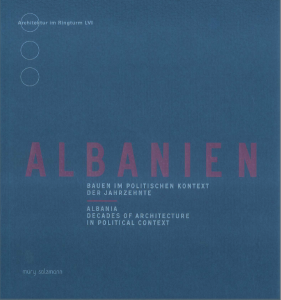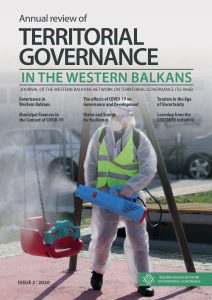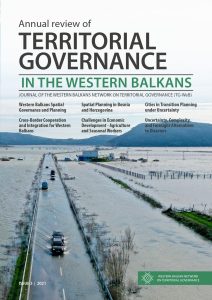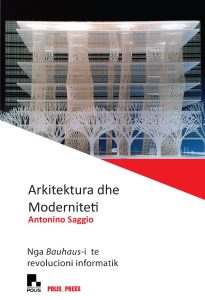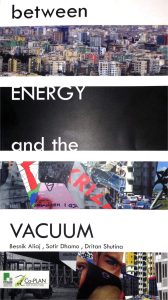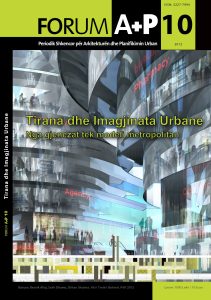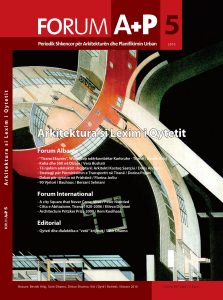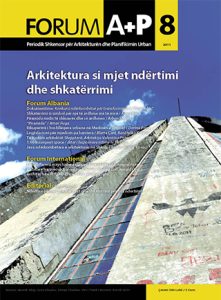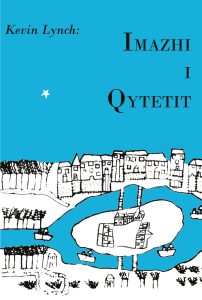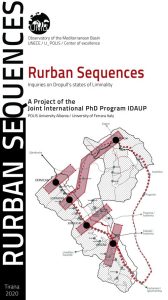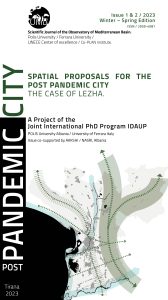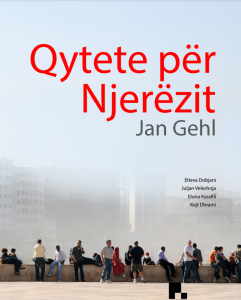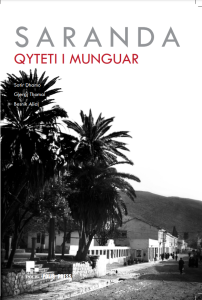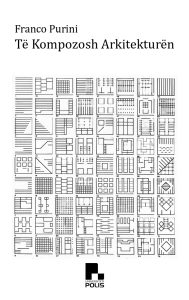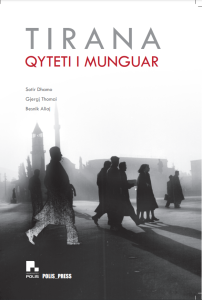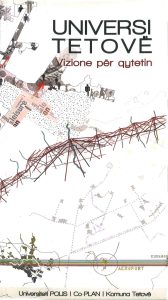“ALBANIA 2030” MANIFESTOA bottom-up visioning process of "Gjirokastra 2030" BESNIK ALIAJActions for sustainable development: A strategy for rural growth in Dropull municipality through the promotion of local resources for building and constructionAesthetic quality of the historic urban landscape. Historic city image and Townscape tradition DORINA PAPAAgainst the grain. Two theoretical studies for re- thinking Gjirokastër ALBERTO GRANDOAlbania – Decades of Architecture in Political ContextAn example for the rural area of Gjirokastra. The case of Zagorie territorial and tourism plan POLIS UNIVERSITY WORK GROUPAnnual Review of Territorial Governance in the Western Balkans Issue 2| 2020Annual Review of Territorial Governance in the Western Balkans Issue 3| 2021Architectural proposal: Reconstruction of the High School "Asim Zeneli" and the surrounding METROPOLIS STUDIOArchitecture and the City in the interplay of socio-cultural instances: Gjirokastra in a (Post-) Modern Condition DESARA PULAArkitektura dhe ModernitetiBetween Energy and the VacuumBeyond boundaries. Exploring new post-pandemic housing models through the reformulation of collective spaces ELENA VEZELLABuilding resilience for local governments in Albania: legal and institutional challenges RUDINA TOTOClimate change awareness in the Lezha area through artistic practice REMIJON PRONJAClimate Resilience through Blue and Green Corridors in Lezha Municipality RODON GJOKACollaborative post-conflict urban planning tools, to help ensure that reconstruction efforts are people- centered and accessible to allCommunity Resilience as an approach: operative tools for the social-ecological sub-system FABRIZIO AIMARCommunity-based rural development The potential of a shrinking village with agriculture vocationConstruction and demolition waste in Lezha FLOGERTA KROSICovered Embers - The rebirth of Gjirokastra from its ashes ELEONORA BACCEGADemographic profile of Gjirokastra region GODIVA REMBECIDerviçan: a morpho–typological development analysis as a tool for its conservationDesign strategies for residential buildings in the post-pandemic era BIANKA MADHIDifficulties and innovation in GIS application at Dropull PPV caseDigital innovation in rural area. A vision for smart village in DropullDisrupting the 'art-touristic attraction' equation: reflections on public art’s possible roles in Lezha’s future planningDriverless transition: the value of autonomous mobility for sustainable urban development GIAN ANDREA GIACOBONEDriverless transition: the value of autonomous mobility for sustainable urban development GIAN ANDREA GIACOBONEDropull - liminal cultures / mapping identitiesExcessive presence of Nitrogen and Phosphorus in the Drini River and their impact on the Kune-Vain lagoon ecosystem: how anthropization can affect biodiversity MATTEO BISIFlooding rehabilitation in Lezha city ANIRA GJONIForum A+P Vol.10Forum A+P Vol.5Forum A+P Vol.8Gjirokastër fortress hillside. Geotechnical hazards assessment and stabilization measures as key factors for the fortress preservation ENDRI DUROGjirokastra CHwB To restore a world heritageGjirokastra rebirth through distributed retirement houses LUCA LEZZERINIGrowing thickness as a research methodologyHuman Centered Design to enhance inclusive tourismImazhi i QytetitImproving health and well-being in the cities XHOANA KRISTOIncreasing regional health through digital technologyIndoor pollutant evaluation and new building solutions to reduce them: literature review and fundamentals LUCA LANZONIInfrastructure: Proposals for planning and settlement models connection and better access development in the Lezhë region BESJANA QAJAInnovative housing models that reflect the needs of contemporary society (Post-pandemic context) MALVINA ISTREFAJ (KOLICI), LLAZAR KUMARAKUInnovative Urban Design Strategies for a Traditional City. The Case of Gjirokastra. LLAZAR KUMARAKUInquiries on the liminality in between Raw material extraction sites and urbanized centers. Study case The quarry in the outskirts of SofratikeIntroduction from the EditorsIntroduction from the EditorsIntroduction from the EditorsLandscape of historical identity. Exploring Landscapes in the State of Liminality in/and the case of SofratikaLiminality Articulations in Territorial Development: A Research On Biopolitics And Property Right TheoriesLinear infrastructure assets as a territorial system for flood disturbances control LORENZO TINTILocal disaster reduction in the municipality of LezhaNavigating Dropull through liminal spaces and thresholdsOMB no.6 Rurban SequencesOMB no.8 Post Pandemic City | Issue 1 & 2Overlapping Layers: a representation and learning landscape code for DropullPlacemaking Gjirokastra DORIANA MUSAJPrefacePrefacePresence of peculiar organisms in the water of Lagoons: potentially valuables Bioindicators for cultural eutrophication level assessment. ANTONELLA VOLTAPreservation of Cultural Heritage in Lezha City KRISTIANA MECOProactive approaches through environmental and architectural elements towards sustainable solutions for post pandemic city. Case study of Lezhë RINE ZOGIANIProposals for the protection and conservation of biodiversity and the Environment ENDRI DUROPunctuating Gjirokastra’s Modernism SKENDER LUARASIQytete per njerezitRethinking and inventing Territory, Infrastructure and Housing in the case of Post pandemic Region of Lezha (Albania) - Part II LLAZAR KUMARAKURethinking and inventing Territory, Infrastructure and Housing in the case of Post pandemic Region of Lezha (Albania) LLAZAR KUMARAKURETHINKING GJIROKASTRA. Can architecture and city planning stimulate hope and growth for shrinking cities? BESNIK ALIAJ, LORIS ROSSI, LLAZAR KUMARAKURithinking the “UNESCO City” Gjirokastra, Albania: Can architects and city planning stimulate hope and growth for shrinking cities? BESNIK ALIAJ, SOTIR DHAMORurality, landscaping, toursim and sustainbale develeopmentRURBAN SEQUENCES Inquiries on Dropull’s states of LiminalityRurban Sequences. Inquiries on Dropull’s states of LiminalitySaranda - Qyteti i MunguarSeeking Production Footprints on Behalf of Innovation, City of Gjirokastra ERIDA CURRAJShëngjin Marina Development WIDELINE S.R.L. METROPOLISShifting from liminality to destination. The case of VriseraSmart accessibility patterns and shrinking cities: The added value of urban design. MARCO NEGRISmart road infrastructure: Shaping the future of Shengjin accessibility ALBINA TOLLICASpatial Proposals for The Post Pandemic City. Panacea Planning and Architecture for The Third Millenium Settlement. The Case of Lezha RegionStrategies to adapt and update the existing residential building stock of Lezha region in the post Covid-19 pandemic era NICOLA TALAMONTIStructural Assessment and Seismic Performance of Traditional Stone houses in Dropulli regionSummary of Findings from the Evaluation of the Current Periphery Building Environment for Lezha City&s Future Vision. ILDA RUSISummary of the general Local Plan of Dropull MunicipalitySustainable Tourism as enhancer for Branding Gjirokastra SONIA JOJICSustainable tourism development in Liminal SpacesTe kompozosh arkitekturenTextile as shelter ARMELA LAMAJThe city of design and culture IVONNE ORTIZ SANCHEZThe creative process of statistical gathering and analysing in DropullThe Gjirokastra Experience. The Art Loop. An urban path to foster the connection between a territory and its cultural identity. NICOLA TASSELLIThe process, difficulties and the innovative VSM findings of DropullThe Time Agent. A hypothesis of a possible development of the city of Gjirokastra through a vital connection between buildings, public space and works of art. STEFANO ROMANOTirana - Qyteti i MunguarTransport Network Impact in Shrinking Cities. The case of Gjirokastra city and rural region BESJANA QAJAUniversi Tetovë - Vizione për QytetinUrban and Territorial Planning paradigms in transition. Academia 100+ Villages and Dropulli caseUsing digital survey modeling as a critical process of knowledge: Exploring the evolution of Scanderbeg Memorial in Lezha. EMEL PETËRÇIUsing innovation as a tool for inverting emigration trends in Dropull. How digital manufacturing could leap the technological gap and strengthen the connection between the community and its territory

